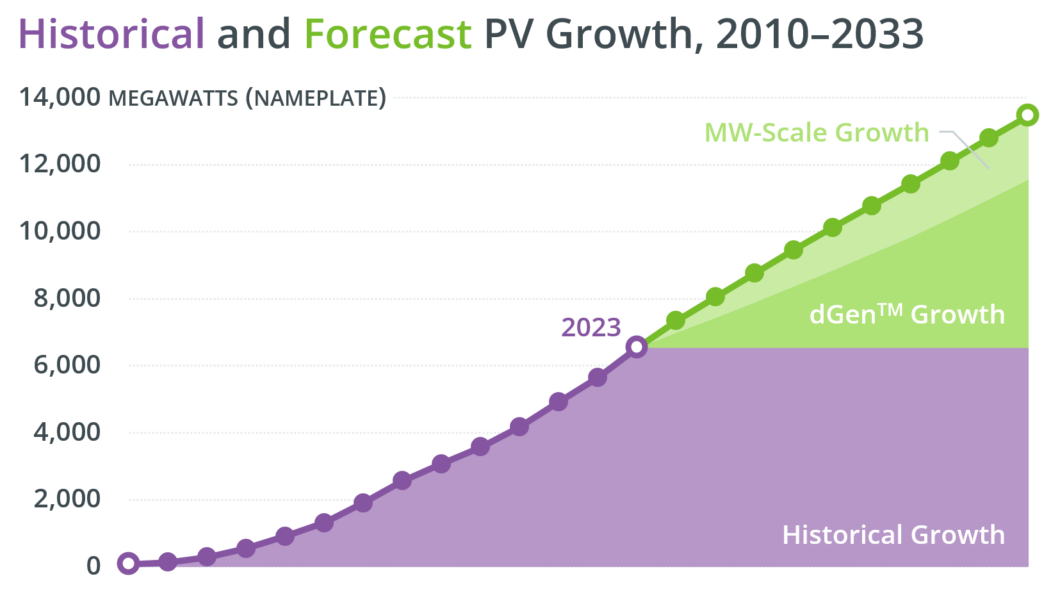CELT 2024: Innovative tool enhances ISO-NE’s solar power adoption forecast

ISO New England forecasts solar power capacity to nearly double in the next 10 years, further reducing the region’s reliance on fossil fuel-fired energy under sunny conditions.
Growth projections for distributed solar photovoltaic (PV) installations are part of ISO New England’s 2024–2033 Forecast Report of Capacity, Energy, Loads, and Transmission (CELT Report)—a key planning document that aims to size up the region’s energy landscape for the next 10 years.
This year’s PV forecast uses the National Renewable Energy Laboratory’s Distributed Generation Market Demand (dGenTM) model to make predictions about PV installations with nameplate capacity less than 1 megawatt (MW). The model simulates customer adoption of solar technology based on economic and other considerations and allows for a more finely-tuned solar forecast than previous years.
ISO forecasters plan to take advantage of additional dGenTM capabilities in future reports. The 2024 CELT continues to use existing methodology, based on state policies, to predict development of distributed PV installations greater than 1 MW.
Most of New England’s solar power installations connect to local distribution systems operated by utilities, rather than the regionwide transmission system operated by ISO New England. While some of these installations participate in the wholesale electricity markets, most do not. Those that do not participate are known in the ISO’s system planning studies as behind-the-meter (BTM).

The ISO anticipates distributed PV nameplate capacity to grow from 7,345 MW in 2024 to 13,466 MW in 2033. This growth includes a doubling in BTM PV capacity, from roughly 4,000 MW to 8,000 MW.
Output from BTM PV is expected to be 5,444 gigawatt hours (GWh) in 2024. Without BTM PV, the region’s projected energy use for the year would be almost 5% higher, at 119,179 GWh. Meanwhile, BTM PV is expected to reduce this summer’s system peak electricity demand by about 4%, to 24,553 megawatts (MW).
In 2033, the final year of the forecast, BTM PV is expected to reduce summer peak demand by a similar percentage, to 27,052 MW. That year’s projected energy use, 140,000 GWh, would be about 7% higher without BTM PV.
BTM PV does not reduce winter peak demand, because the peak typically occurs after sunset.
Learn more about the 2024 CELT Report
- Categories
- Recent Publications & Events
- Tags
- celt, clean energy, forecast, solar



